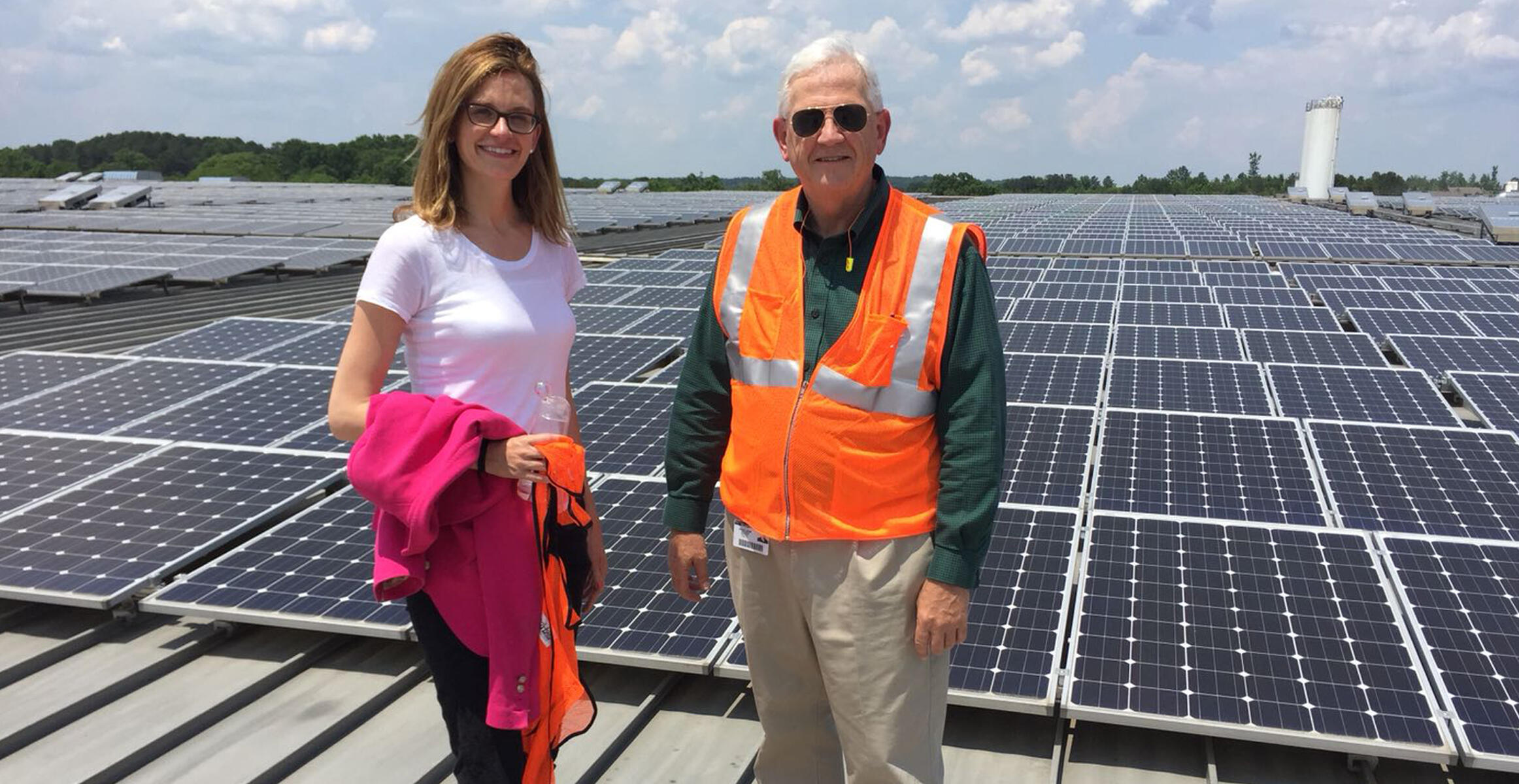How sustainable building is driving down costs

The construction process is one of the biggest culprits when it comes to global greenhouse emissions. With urbanization increasing in all corners of the world, it’s more important than ever to address these growing social demands while still meeting ambitious low carbon targets. Here we discuss the innovations, technologies and legislation helping to make a positive change.
We're often told that sustainability costs more. How can you make the business case for sustainability?
Firstly, there is significant energy usage in the construction process, so if you can find ways to be more energy efficient, you will become more cost efficient. Consumer demand is having an effect. As more and more companies want to know about the carbon going into the making of a product – what we call ‘embodied carbon’ – the construction sector will have to work to bring down its emissions if it wants to meet this market need. Secondly, 90% of many companies’ costs are people, so if you can find ways to reduce illness and absenteeism by creating a more productive environment, you’re halfway there. Green buildings and living walls foster a sense of health and wellbeing – and you’re also adding economic value by creating a company ethos that employees want to be a part of.
What is wrong with the way we build today?
Managing suppliers and understanding the embodied carbon across the supply chain, so that everybody is coordinated could make a big difference – and it’s not happening enough. The current diffused responsibility makes green building that much more difficult, but this is also where the opportunity lies. There are great examples like Energiesprong, who will retrofit your house – everything from solar panels to insulation – and deliver you a net zero carbon home. Streamlining the process like this, instead of leaving individuals to coordinate 15 different suppliers, encourages people to aim for zero carbon.
Do we need legislation to force a change? How can we incentivize construction firms to drive down emissions?
Construction companies will want to get ahead of legislation in order to benefit financially in the future. When you have a deal like the Paris Agreement, where we’re trying to fully decarbonize the construction industry by the middle of the century, companies that have high emissions will be at a disadvantage. Certifications like LEED and BREEAM also set a precise definition of what it means to be a green building. There will come a time when corporations will actually lose economic value if they don’t make these zero carbon pledges.
How does a building's operational emissions compare to the emissions that are created in the construction process?
28% of energy related global greenhouse gas emissions come from the operations of a building, compared to 11% from the construction process. Interestingly, the operating emissions are actually decreasing because of this shift to renewable energy. At WorldGBC, we have a big push on net zero carbon buildings, which we feel is contributing to this reduction in operating carbon.
Does the carbon problem differ around the world?
Absolutely. In emerging economies like China, where the equivalent of Rome is built every week, you have a very different problem than that in Europe or America. While there is still a lot of construction in more developed regions, we tend to focus on retrofitting existing buildings, which has a lower carbon cost. But in newly urbanized areas like Africa, where the pressure to build is so huge there isn’t as much consideration of their emissions profile, carbon reduction can be more difficult to control.
What technologies and innovations are helping to drive down emissions?
There are a lot of innovative things happening. In Iceland they’re able to turn CO2 into stone, converting carbon into a building product. In this way, not only could buildings be zero carbon, but they could actually be regenerative. Modular construction is also an interesting development. If you can build in a factory setting rather than an outdoor environment, you will avoid costly delays caused by outdoor factors like the weather. Technologies employed in the operations of a building – smart meters, connected devices or applications that allow you to tap into renewable energies at particular times of day – are also helping.

Does the choice of construction machinery influence carbon reduction?
Electrification is hugely important. I know that Volvo CE is doing great research around electromobility and creating efficiencies in terms of emissions and cost. In this way, addressing transportation within the construction process will help chip away at carbon emissions.
What is the biggest challenge facing WorldGBC?
The challenges differ from country to country, so it’s finding ways to keep our focus on the global goals while working at a local level. In South Africa, for example, they’re focused on reducing emissions, but are in the middle of a water crisis. So, it’s often down to finding effective ways to reprioritize while still implementing targeted carbon reduction plans.
Ends.
Image 1: Terri Wills presenting at WorldGBC Congress in Sweden.
Image 2: Terri Wills with James Jarrett, Director of Commercial Manufacturing at green business Shaw Industries in Georgia USA.
Downloads
FOR FURTHER INFORMATION
Tiffany Cheng
Head of Brand, Marketing and Corporate Communication
Regions Asia and China
Volvo Construction Equipment
E-mail: tiffany.cheng@volvo.com
Åsa Alström
Head of Strategic Communications
Volvo Construction Equipment
Email: asa.alstrom@volvo.com